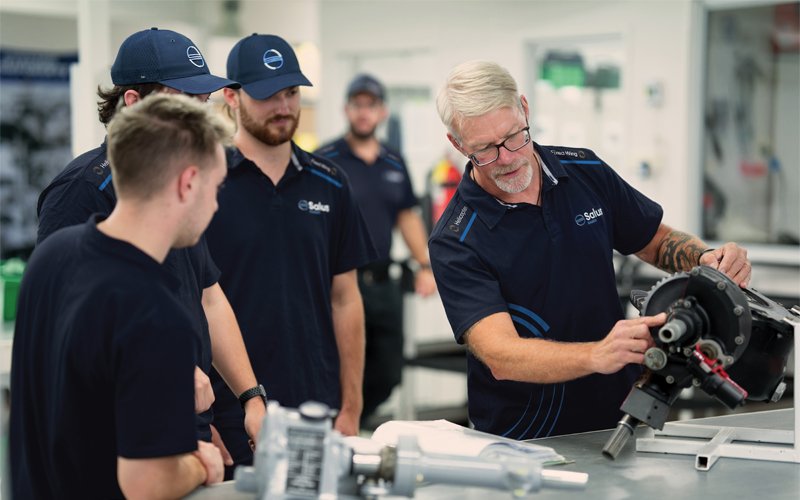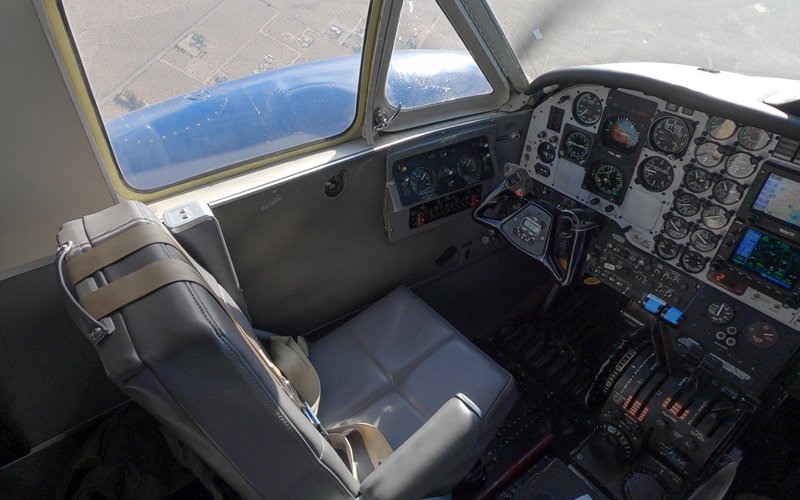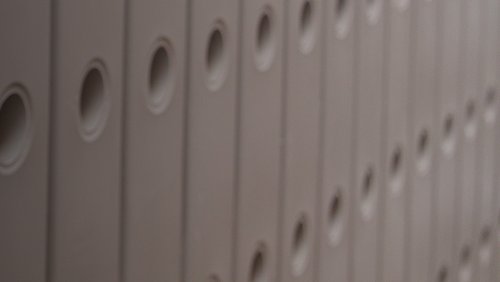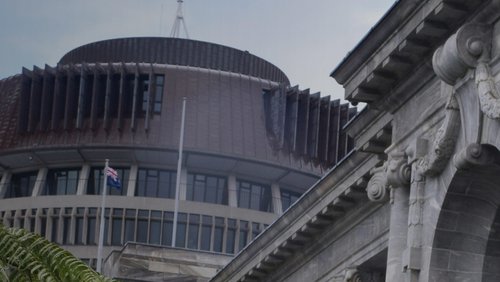30 Jun 2025
While more needs to be done to address critical challenges in Aotearoa’s aviation and aeronautical sectors, there are still plenty of engineering success stories on the radar.
Pilots are the glamorous public face of aviation – the rock stars. But no plane flies anywhere without a Licensed Aircraft Maintenance Engineer signing it off, notes Simon Wallace, Chief Executive of the Aviation Industry Association.
“They are a critical part of the workforce, even if their contribution is sometimes overlooked.”
The problem for the industry, not to mention everyone else who relies on aviation (most of us, if we’re honest) is that this critical engineering talent is in increasingly short supply. The shortage preceded Covid-19, but has become worse since the pandemic hit. Last year, the Association partnered with the Workforce Development Council to more closely investigate the numbers.
“We looked at Licensed Aircraft Maintenance Engineers and Aviation Maintenance Engineers. There are currently 3,000 working in New Zealand, which is 300 to 500 short to meet demand. Looking forward to 2034, it’s estimated we’re going to need 4,500 and unless a number of things happen, we’re going to continue to have a shortage.
“We’ve got an older cohort of workers that are leaving the workforce and we’re just not replacing them.”
The impact is apparent at companies that rely heavily on engineers, such as Salus Aviation, a full-service maintenance and overhaul business whose history dates back to 1936. Headquartered at Ardmore Airport in South Auckland and with multiple facilities across New Zealand, South Africa and the United States, Salus has a fixed wing maintenance operation in Hamilton and the other locations focused on helicopters. Its 66-strong engineering team includes 28 helicopter maintenance engineers, 28 overhaul engineers, and 10 engineers specialising in fixed wing maintenance. But like others, it’s struggling to fill positions.
“There’s a global shortage of aviation engineers across fixed wing and helicopter, maintenance and overhaul,” says Lisa Holland, Salus Aviation’s General Manager of People and Capability.
“Because we’re predominantly rotary it’s even harder for us, because you have to have the correct ratings to be able to work on helicopters. It’s an ongoing battle.”
To fill positions, Salus has had to rely heavily on overseas talent – 29 percent of its engineers are from overseas. As an accredited employer, the company has been able to sponsor aircraft maintenance engineers, who are included on the Green List, the immigration vehicle that offers fast-tracked residency for people with certain in-demand skills. Unfortunately, says Lisa, the Green List doesn’t yet include engineers who specialise in overhaul work.
“The overhaul guys come in on skilled visas then have to leave. They don’t have a pathway to residency. It’s a real issue for us, because these people are hard to find, we put all this time and resource into training them, then after a certain period they may have to leave.”
Salus is one of only two LTS101 engine overhaul facilities in the world, as well as being the only approved service centre for the Kawasaki Heavy Industries gearbox outside Japan.
Thereʼs a global shortage of aviation engineers across fixed wing and helicopter, maintenance and overhaul.
“That’s why our turbine engineers and dynamic component engineers are so critical to our business, and why we’re pushing to get them on the Green List.”
Salus does run an in-house apprenticeship programme as a way of growing talent locally, but Lisa would like to see more promotion of the career in schools, particularly with senior students.

Salus Aviation apprentices receive training in the Dynamic Component Workshop at the Auckland facility. Photo: Salus Aviation
But plugging the gaps with overseas talent can only be part of the answer. Simon Wallace argues that solving the shortage will in the first instance require funding more places at formal training institutions. A spokesperson from Nelson Marlborough Institute of Technology says it has increased its aeronautical engineering programme capacity this year, with the expansion of its programme to the Nelson campus, on top of the existing programme at Woodbourne. The Institute now trains approximately 120 students each year at level three and four across both sites. Allied to this, there also needs to be far more support for on-the-job training through apprenticeships, Simon says.
Finally, the industry needs to play its part by promoting engineering as an attractive career option, says Simon.
“We do a lot of that in the pilot space, but arguably we haven’t done enough to promote aviation engineering,” he says, adding that the Association is also aware of the need to work harder to retain existing engineers.
A case in point is the Association’s upcoming annual conference in Wellington in September, where the issue of mental health will be addressed.
“Excuse the pun, but it is something that flies below the radar. Engineers are the ones who are signing off aircraft, and they have a huge level of responsibility. But while there’s a programme called Safe Haven that focuses on mental health for pilots and air traffic controllers, there isn’t an equivalent one for engineers. As an association, we’re working on an initiative that will provide better support for them in that space.”
How do you get bright young talent excited about aviation? For a start, you could highlight engineering’s vital contribution to advances in the industry. We are on the cusp of battery-powered commercial flights. Airports are increasingly electrifying operations, while the sector more generally casts around for new ways to reduce its emissions profile. Engineers are going to have a central role to play.
Advances in the aviation sector
Boston-based startup Merlin Labs is developing a non-human pilot. The company has a strong New Zealand presence, with a subsidiary in Kerikeri (its 20-strong staff includes Design Engineers and Licensed Aircraft Maintenance Engineers) and various contracted Kiwi partners.
Air New Zealand’s onetime Head of Engineering Grant Crenfeldt is CEO of Merlin NZ.
“We believe the next leap in aviation safety will come from pairing the strengths of existing human pilots with the benefits of advanced automation,” he says of Merlin’s work.
We believe the next leap in aviation safety will come from pairing the strengths of existing human pilots with the benefits of advanced automation.

Merlin aircraft equipped with its advanced automation system, the Merlin Pilot. Photo: Merlin Labs
Long term, Merlin’s goal is to enable uncrewed flight on small aircraft, while expanding the number of aircraft supported for reduced-crew operations. But that’s some way off, with plenty of testing, certification, and capability-building still to come. In the meantime, “… we’re working with the New Zealand Civil Aviation Authority to certify an autonomous system capable of take-off to touchdown on a Part 23 aircraft”, Grant says.
There are other engineering-led innovations happening in New Zealand that, while perhaps less glamorous than non-human pilots, are advancing the aviation sector. Take Airport Equipment, Australasia’s only manufacturer of passenger boarding aerobridges. A subsidiary of third-generation Hutt Valley firm J&D McLennan Engineering, Airport Equipment’s coups include designing and manufacturing the first aerobridge in this part of the world for the double-decker Airbus A380, which it unveiled in Sydney 14 years ago. Its most recent innovations include an industry-first autonomous docking solution. Using a camera module fitted to a bridge cabin and connected to a remote intelligent PLC system, Intellidock scans a newly landed aircraft’s door, automatically drives the boarding bridge into initial position, then deploys sensors to ensure perfect docking alignment.
Automation already plays a vital role in helping pilots’ hands, eyes and brains focus on the most critical tasks in the flight deck, but it must evolve from a tool into a trusted partner that enhances decision-making, reduces workload and increases performance.

Western Sydney Interlock Enabled Bridges. Photo: Airport Equipment
“It’s a bit of a no-brainer because it reduces training time, operator error, and wear and tear on the bridges,” says Design Manager Andrew McLennan, a mechanical engineer by training.
“It’s been big for us, and we now have it installed at a number of different locations throughout New Zealand and Australia.”
Having recently opened a much larger, state-of-the-art factory in Upper Hutt, the company is now primed to pursue its next big thing – whatever that may be.
“There’s a lot more capacity in the new factory,” says Andrew. “The question for us now is how can we channel that resource to make better products? It might be something complementary to the bridges. Or it might be something in a completely different market.”
This article was first published in the June 2025 issue of EG magazine.







